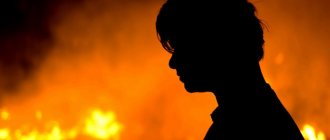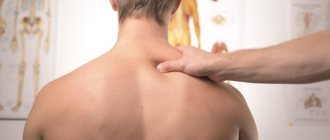The short-term craving for sleep during the day is well known to most of us. As a rule, this is a consequence of overwork, caused by increased physical and mental stress or chronic lack of sleep. Yawning and drowsiness often occur in a stuffy room with a lack of oxygen. Once you go out into the fresh air, your vigor returns. Thus, by observing the nature and duration of the period of drowsiness, we can conclude how serious the pathology is.
What to do if you constantly feel sleepy
If you constantly want to sleep, but at the same time you feel tired, your performance and concentration decrease, you should make an appointment with a doctor. Based on the results of the examination (if such a need arises), the therapist will prescribe a course of treatment or give a referral to a specialist. Most often, drowsiness is a companion to any chronic disease, so the patient will have to undergo examination so that the cause of the syndrome is correctly identified.
If a headache appears after sleep or the pain syndrome is present in a muted form during rest, while weakness and fatigue progresses, a visit to the doctor cannot be postponed. The symptoms described above are characteristic of diseases of the central nervous system, circulatory organs, heart and blood vessels, and many other pathologies.
Let us consider in more detail the features of the manifestation of drowsiness in various diseases.
Competition “Bio/Mol/Text”-2020/2021
This work was published in the “Free Topic” category of the “Bio/Mol/Text” competition 2020/2021.
The general partner of the competition is the annual biotechnology conference BiotechClub, organized by the international innovative biotechnology company BIOCAD.
The sponsor of the competition is SkyGen: a leading distributor of life science products on the Russian market.
Competition sponsor: the largest supplier of equipment, reagents and consumables for biological research and production.
"Book" sponsor of the competition - "Alpina Non-Fiction"
We often hear that social networks are to blame for everything: “Teenagers do not part with their phones, they sit on them day and night! And then they can’t wake up for school, they fall asleep in class, and because of this they study poorly. Then on weekends they sleep until noon, but the lessons won’t teach themselves. Okay, if they want to go to bed late, then let them read books, because it’s this blue light from the screens that keeps them awake for so long!”
Do you recognize the arguments? But some of them are myths, while the significance of others is exaggerated. In reality, why we sleep and how we do it at different times in our lives is a complex and contradictory story. Let's try to figure out why the sleep of teenagers and young adults is so different from the sleep of middle-aged people and children, why we don't get enough sleep all the time (even if we sleep for what seems like a sufficient amount of time), what role does the first class/first lesson at 8 play in this? :30 in the morning, and what - hanging out on social networks at night, looking at it, and let's talk about whether something can be done about all this.
Vegetovascular (neurocirculatory) dystonia
Vegetative-vascular dystonia is a dysfunction of the vascular system associated with a disorder of the endocrine system (more precisely, with a change in the mechanism of neuroregulation). The disease is so common that many people do not perceive it as a serious illness. The high-risk group includes young and middle-aged women. In addition to drowsiness and headache, signs of VSD are:
- cardiopalmus,
- rapid onset of fatigue from minor physical exertion;
- feeling of lack of air (a person often sighs);
- periodic dizziness;
- pain in the heart area;
- cold extremities (especially hands and feet);
- tendency to sweat.
A large role in the development of the disease is played by hereditary predisposition, bad habits (smoking in the first place), a sedentary lifestyle, inability to withstand stressful situations, and emotional instability. VSD can develop against the background of cerebrovascular accident.
In most cases, symptoms of VSD disappear with lifestyle changes. Proper nutrition, physical exercise, adherence to a work-rest regime, and regular hardening lead to a significant improvement in well-being: drowsiness and headaches disappear, mood improves and performance increases.
In advanced cases, medications are prescribed to improve the functioning of the autonomic nervous system. The problem cannot be solved on its own; medical assistance is required.
Causes
The alternation of sleep and wakefulness in the human body is a mechanism that is clearly regulated by processes established by nature. They occur in the cerebral cortex and subcortex, a complex neural system, and are based on complex interactions of activating and inhibitory processes.
If a failure occurs in the cycle coordination system that works like a clock (even in one section), then it leads to a disruption - braking begins to predominate. The culprits for this could be:
- severe fatigue;
- stress at work and at home, emotional shock, nervousness;
- head injuries (traumatic brain injury, etc.);
- constant “lack of sleep” that continues for a long time;
- schizophrenia or any other mental disorder;
- taking medications (tranquilizers, antipsychotics, various antihistamines or sugar-lowering drugs) or drugs;
- infectious viral diseases (syphilis of the brain, encephalitis and meningitis);
- violation (cessation) of breathing - apnea, and the accompanying oxygen deficiency
- tumors, cysts, hematomas;
- disorders in the endocrine system and related diseases (diabetes mellitus, thyroid problems);
- liver and kidney diseases;
- genetics;
- heart failure;
- hypertension;
- exhaustion of the body.
These are not all the causes of hypersomnia. Its development may be associated with moving to a new place of residence, a change in lifestyle, a vacation in a situation that is sharply different from everyday life, the birth of a child, etc.
CNS lesions
Any brain damage caused by infection, trauma, postoperative complications or systemic diseases can lead to the development of drowsiness. Associated symptoms:
- headache;
- fatigue;
- lethargy;
- violation of attention and active orientation;
- change in facial expressions.
Drowsiness develops as you fall into a coma. Patients in a state of partial unconsciousness complain of headache, nausea, dizziness, aggravated by bright light and loud sounds.
Drowsiness also occurs when poisoned by poisons that affect the central nervous system. As a result of exposure to endogenous or exogenous toxins, depression of the central nervous system occurs. The person complains of weakness, headache, lethargy, and blurred vision. In some cases, drowsiness is replaced by bouts of excitement, after which severe fatigue sets in. The listed symptoms are alarming and indicate the need for emergency medical care.
Kinds
Based on developmental factors, excess sleep duration is divided into several types:
Pathological hypersomnia can appear as a result of a nervous disorder, as well as during sleep phenomena.
Idiopathic or psychophysiological hypersomnia occurs in completely healthy people aged 15-30 years against the background of chronic lack of sleep or constant stress. It is accompanied by “sleep intoxication,” a syndrome in which a person, after waking up, is confused, cannot orient himself in space, does not remember anything, and behaves strangely.
Post-traumatic hypersomnia is the consequences of mental and physical trauma, accompanied by stress. But its clinical manifestations are quite unpredictable, for example, “hysterical hibernation” - sleep for a long period with short awakenings. Infectious lesions of the brain and other pathologies can threaten lethargic (continuous multi-day) sleep.
Psychopathic hypersomnia is characteristic of patients with neurological disorders. It is unique in that an individual can sleep for several days, and the EEG shows that their brain is alert and active.
Narcolepsy is characterized by daytime sleep that is restless and does not bring rest. This is the most severe form of the disorder. At the same time, a person is not able to control himself; he can fall asleep in any position, anywhere. People who have long suffered from this disorder, sensing the approach of an attack, look for a comfortable place in advance and take a position that will allow them to sleep peacefully in comfortable conditions. When falling asleep and during sleep, the patient may experience hallucinations. His muscles relax so much that sometimes after waking up he is unable to move, sometimes even paralysis occurs for a long period.
Iatrogenic (drug-induced) hypersomnia develops after the use of certain medications.
Kleine-Levin syndrome or periodic hypersomnia - a drowsy state occurs from time to time along with an increased feeling of hunger. This is usually typical for young men (under 40 years old) and goes away on its own.
There are also species whose nature is unclear. As a rule, they are classified as idiopathic.
The disorder is also systematized according to its manifestations:
permanent hypersomnia – a monotonous desire to sleep. This condition is constant and accompanies the patient all day. Occurs as a result of injuries due to strong psychophysical stress, taking medications;
paroxysmal - attacks of drowsiness come suddenly and uncontrollably.
Drowsiness in renal and hepatic coma
Renal and hepatic coma are life-threatening conditions. Uremic (renal) coma is a consequence of chronic or acute renal failure. When the ability of the kidneys to cleanse the body of protein metabolism products decreases, pronounced signs of poisoning appear, which include lethargy, drowsiness, and indifference to the surrounding reality. The patient's only desire is to go to sleep to relieve fatigue.
In cases of acute renal failure caused by burn disease and other injuries, threatening symptoms increase rapidly. In chronic, difficult-to-treat diseases, such as renal amyloidosis or glomerulonephritis, increased drowsiness develops gradually and is often a harbinger of renal coma. Worrying signs also include blurred vision and itchy skin.
The occurrence of daytime sleepiness in children
For children under one year old, sleep is the best time for growth. When a child sleeps, he produces the hormone melatonin, which has a beneficial effect on the development of the baby. But if the child always feels sleepy and at the same time has a disturbance in the frequency of urination, loose stools for a long time, fever, no reaction to affection, no mother’s voice, loss of appetite, then it is necessary to urgently see a pediatrician.
A decrease in activity during the daytime may be associated with traumatic brain injury, poisoning, or helminthic infestations. When diagnosing a pathological condition, they can identify somatic diseases that occur without pronounced symptoms.
Brain contusion
With a brain injury, negative symptoms increase gradually, so the patient’s general well-being does not always correspond to the severity of the injuries received. Drowsiness and apathy may be the only signs indicating a pathological condition. As swelling increases, tissue compression increases, intracranial pressure increases, which causes symptoms such as headache, nausea, and vomiting. Urgent care should be called if the patient is sleeping after the injury without taking sedatives.
A perfect storm
The map for us will be the model of a “perfect storm” (a perfect storm, an English phraseological unit denoting an event in which a rare combination of circumstances sharply aggravates the events) (Fig. 1) [1], [2]. This is a model according to which, in adolescence, sleep is influenced by physiological and social factors: on the one hand, shifting it in time, on the other, reducing its duration. This subsequently affects well-being, mood, academic performance and can cause health problems.
Figure 1. The “perfect storm” model.
[2]
Hypothermia
The onset of drowsiness after a long stay in the cold is due to a pronounced disruption of metabolic processes in the cells of the cerebral cortex due to a decrease in body temperature and pathological changes in the nature of biochemical reactions. In case of short-term exposure to low temperatures, drowsiness goes away on its own, and in case of frostbite, comprehensive medical care is required. Surgeons, neurologists, neurologists, traumatologists, therapists and doctors of other specializations take part in rehabilitation.
You are missing some vitamins or minerals
Drowsiness is often caused by a deficiency of vitamin D or B12, as well as iron, magnesium or potassium. All these substances play an important role in energy metabolism. If they are lacking, all the body wants is to crawl under the blanket and close its eyes.
What to do
To check whether everything is in order with the listed vitamins and microelements, you need to take a blood test. It is best to do this with the direction of a therapist. The doctor will be able to correctly interpret the test results and, if necessary, recommend pharmacy vitamins and dietary supplements.
However, they may not be needed. Sometimes the lack of a particular substance can be compensated by making changes to the daily diet. For example, to increase your iron levels, you need to eat spinach, liver and red meat.
Inquire








